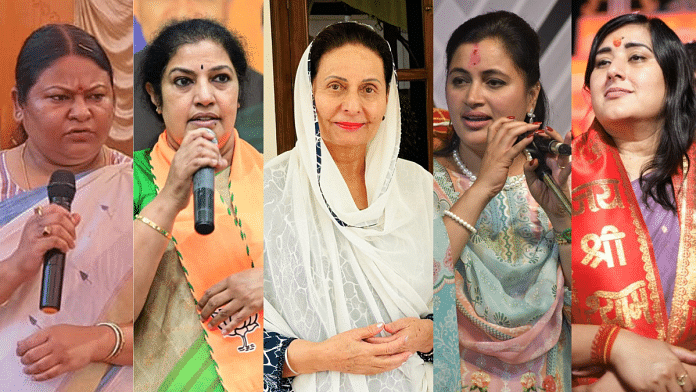Thank you dear subscribers, we are overwhelmed with your response.
Your Turn is a unique section from ThePrint featuring points of view from its subscribers. If you are a subscriber, have a point of view, please send it to us. If not, do subscribe here: https://theprint.in/subscribe/
The Women’s Reservation Act was passed with great anticipation in a special session of Parliament just a few months before the General Elections of 2024. Questioning the actual intentions, discussions in the Houses mostly revolved around who gets to take the credit for this historic move. Eighteen months after the much-lauded Act, action toward actual implementation remains unseen. Since September 2023, India has seen 15 elections, including the General Election for Lok Sabha and elections to 14 Legislative Assemblies, with 2243 contested seats, not to mention the bye-elections.
According to the Election Commission of India, 28302 candidates competed for these 2243 seats. Only 9.8% of the 28302 contestants, 2785, were women. However, 247 in number, they constitute 11.01% of the elected representatives. Had the Act been enacted immediately, at least 741 representatives would have been women, making up 33% of the contested seats. The Act states that one-third of the seats in the Lok Sabha, State Legislative Assemblies, and the National Capital Territory of Delhi will be reserved for women, including seats reserved for women from Scheduled Castes and Scheduled Tribes. Under Article 330, one-third of the seats reserved for Scheduled Castes and Scheduled Tribes must be allocated to women.
The Act amended an existing article, Article 239AA, and introduced three new articles in the Constitution: Articles 330A, 332A, and 334A. Articles 239AA, 330A, and 332A address the reservation for women in the National Capital Territory of Delhi, the Lok Sabha, and the state legislative assemblies. Meanwhile, Article 334A specifies when this Act would take effect. According to Article 334A, the reservation of seats for women would commence after the first census following the Act and the subsequent delimitation.
The Census 2021 has not yet begun and has been postponed multiple times, initially due to the COVID-19 outbreak. Notably, over 100 countries, including nations severely impacted by COVID-19 outbreaks, have conducted their censuses since then. During his Lok Sabha address on the Women’s Reservation Bill, the then Union Minister of Home Affairs announced that the next census would occur immediately after the 2024 general elections. It has been a year since the new government took office, and the census has yet to commence.
Article 82 was referenced to support the delimitation clause during legislative discussions. This article states that after each census, the allocation of seats and state divisions into territorial constituencies can be readjusted according to Parliament law. Consequently, even if a census is conducted before 2026, the readjustment of constituencies, as per Article 82, cannot occur until after the census figures taken after 2026 are published.
The previous Delimitation Commission was established in 2002, following the 2001 Census. The Delimitation Commission submitted its recommendations, which were only implemented in 2008 after Supreme Court intervention. In January 2025, the Supreme Court dismissed two Public Interest Litigations filed against the delimitation clause. One petition challenged the Bill and was rejected as it had already become an Act. The other petition was dismissed because the court was not inclined to examine the plea under Article 32, suggesting that the petitioner could approach the high court or another appropriate forum. Obtaining promising judgments on new petitions may take a substantial time.
Given these facts, the commitment to the cause is questionable. Although all political parties have been vocal in claiming credit for the Act, none seem genuinely serious in practice. The percentage of women contestants in the 15 elections mentioned is as low as 4.5% in some states, with the highest participation reaching around 13% in a limited number of states. Party tickets were unaffected by the census or delimitation. What is stopping them?
With the delimitation clause in effect, execution of the Women’s Reservation Act is likely a long way off. We must wait for the data from a census conducted after 2026, an Act passed by Parliament to establish the delimitation commission, and the commission to submit its recommendations, which will eventually be implemented on some fine, eternal day.
Women make up 50 percent of the population. The question of which constituency is suitable for women’s reservation is irrelevant, as all constituencies are equally eligible. With a proper rotation strategy for the reserved seats, which is currently absent in the Act, implementing women’s reservation is not a distant fantasy. However, it depends on the urgency of this demand and the institutional will to realize it. It is up to citizens to decide whether to wait for that eventual day to see women participating in legislative discussions or to initiate actions and bring this vision to life.
These pieces are being published as they have been received – they have not been edited/fact-checked by ThePrint.


